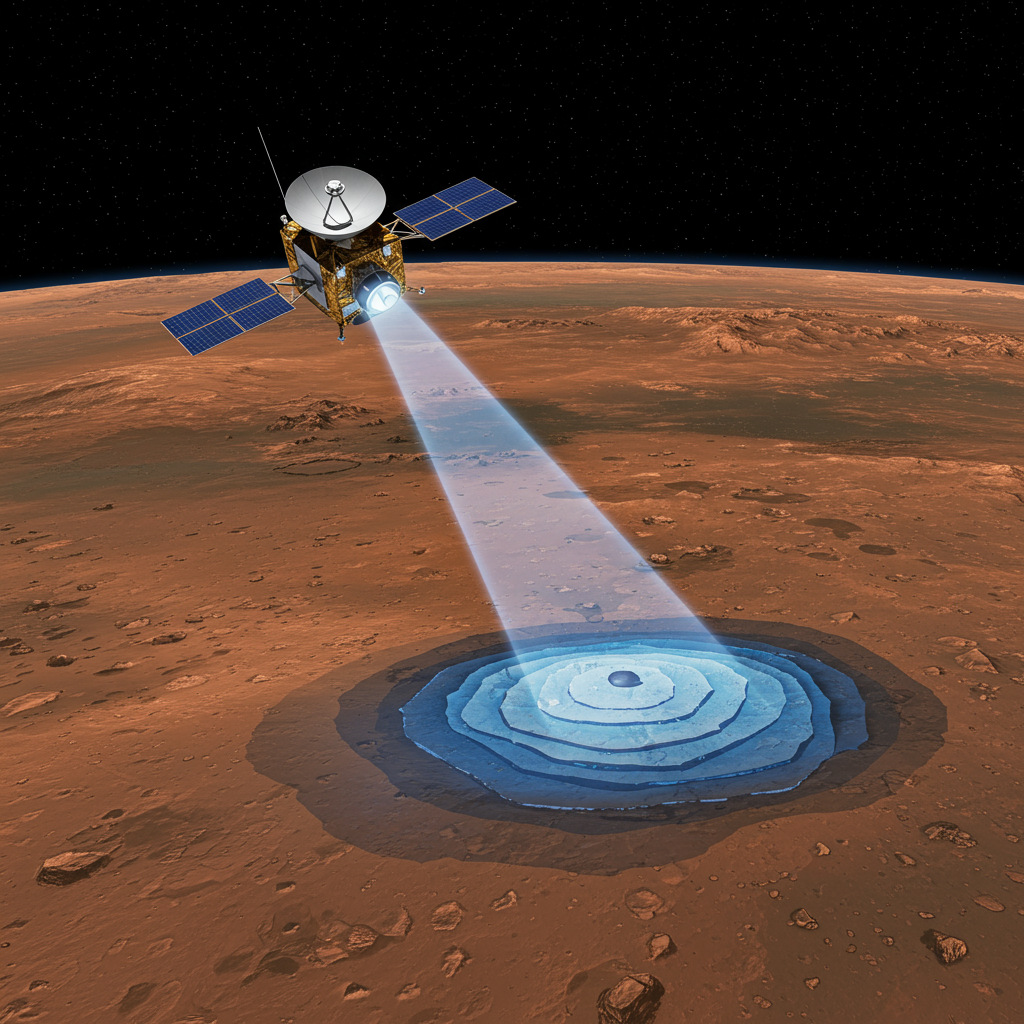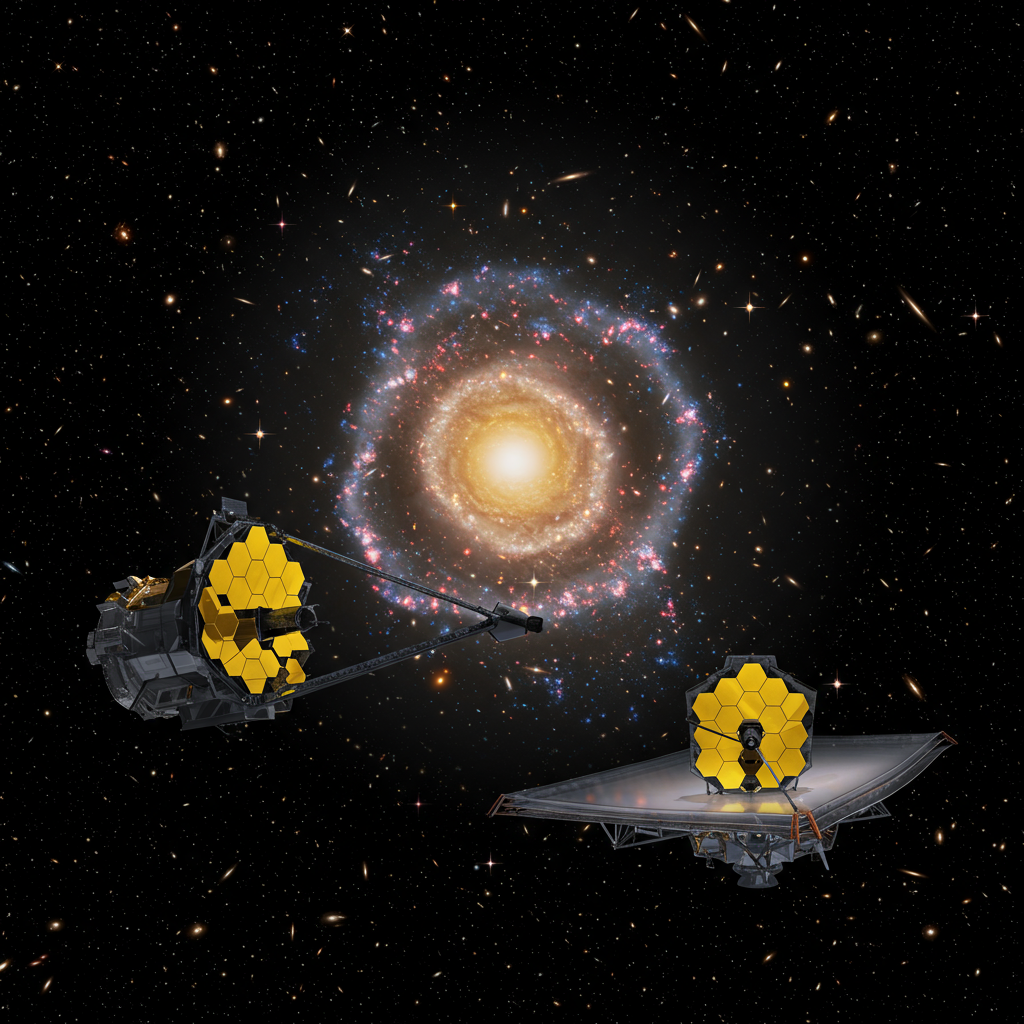After nearly two decades in orbit around the Red Planet, NASA’s Mars Reconnaissance Orbiter (MRO) is still finding new ways to unlock scientific secrets hidden beneath the Martian surface. A clever engineering maneuver, dubbed a “Very Large Roll,” has dramatically boosted the power and capability of MRO’s subsurface radar instrument, sharad. This innovative technique is allowing scientists to peer deeper underground than ever before, potentially solving long-standing mysteries about Mars’ composition and its history of water. The breakthrough highlights how pushing the limits of existing spacecraft can yield profound new discoveries, even from veteran missions.
MRO’s Enduring Mission and Its Instruments
Launched in 2005, the Mars Reconnaissance Orbiter (MRO) is one of NASA’s most successful and longest-serving Mars missions. Its primary goal has been to study the history of water on Mars through detailed orbital observations. MRO carries a suite of powerful scientific instruments. These include cameras like HiRISE, which captures stunning, high-resolution images of the Martian landscape. It also includes spectrometers and atmospheric sounders. But critically, MRO also hosts the Shallow Radar, or SHARAD instrument.
The Challenge of Orbital Orientation
Operating a spacecraft in orbit is a complex balancing act. Instruments require specific viewing angles. Solar panels must face the sun for power. The high-gain antenna needs to point directly at Earth for data transmission. For many years, MRO’s orientation prioritized power generation and communication needs. It also favored instruments designed for surface imaging, like HiRISE. This meant that SHARAD, designed to look downwards, was positioned on a side of the spacecraft facing mostly away from Mars.
This less-than-ideal placement presented a significant challenge for the SHARAD instrument. Its 10-watt radio signal, intended to penetrate the Martian surface and bounce back, had to pass through the main body of the spacecraft itself. This internal path introduced considerable noise and interference. Despite this limitation, SHARAD still performed admirably. It successfully mapped the Martian subsurface down to depths of one to two kilometers. Its data revealed buried ice deposits and layered geological structures. However, the science team knew the instrument had the potential to see much deeper if only the signal quality could be improved.
The Breakthrough: Implementing “Very Large Rolls”
Planetary scientists and mission engineers are constantly seeking innovative ways to maximize scientific output from existing assets. The SHARAD team on MRO proposed a bold idea. They suggested temporarily altering the spacecraft’s standard orientation. This wasn’t a small tweak. It involved rotating the entire MRO spacecraft 120 degrees from its usual stance. This dramatic pivot, known as a “Very Large Roll” (VLR), was designed to point the SHARAD antenna directly downwards, aiming its signal straight at the Martian surface.
Implementing such a roll is no simple task. It requires meticulous planning by the mission control team at NASA’s Jet Propulsion Laboratory. Turning the spacecraft 120 degrees means temporarily moving the solar panels out of optimal sun alignment. It also means the high-gain antenna is no longer perfectly pointed towards Earth. This risks power interruptions and data flow reductions. Despite these challenges, the potential scientific payoff was deemed worth the effort.
Quantifying the Power Boost
Between 2023 and 2024, the MRO team executed three of these innovative Very Large Rolls. The results for SHARAD were immediate and dramatic. The signal strength received by the instrument increased significantly during each roll. The measured increases were 9 decibels (dB), 11 dB, and 14 dB. This might not sound like a huge jump in linear terms. However, the decibel scale is logarithmic. An increase of just 10 dB represents a ten-fold increase in signal power. The average increase across the three rolls was around 10 dB. This effectively gave SHARAD ten times the signal-to-noise ratio it had in its standard orientation.
This massive boost in signal strength translates directly into enhanced subsurface penetration and clearer data returns. It significantly reduced the noise that previously obscured deeper layers. The Mars Reconnaissance Orbiter’s aged but capable radar suddenly gained unprecedented vision underground.
New Depths, Exciting Discoveries
The first VLRs targeted specific regions of high scientific interest on Mars. The enhanced subsurface scanning power of SHARAD revealed fascinating new details. At the Medusae Fossae Formation, a vast, enigmatic geological deposit near the Martian equator, the improved signal imaged a buried basalt layer. Scientists pinpointed its depth at around 800 meters (about half a mile) below the surface. This provides important clues about the formation and history of this unique region.
Another target was Ultimi Scopuli, located near Mars’ south pole. This region is known to contain significant water ice deposits. With its newfound clarity, SHARAD was able to measure the depth of the ice here. The radar confirmed ice layers extending down about 1500 meters (nearly a mile). This provides valuable data points for understanding the total volume and distribution of water ice reserves on the planet.
Hunting for the Elusive Liquid Water
Perhaps the most compelling target for the enhanced SHARAD is the Martian south pole. In 2018, the MARSIS instrument on the European Space Agency’s Mars Express orbiter reported tantalizing evidence. Its data suggested the presence of localized areas of liquid water beneath layers of ice at the south pole. This finding generated significant excitement but also debate within the planetary science community. Confirming the presence of stable liquid water, even in salty brines, would be a major discovery. It has profound implications for the potential for past or present microbial life on Mars.
With its ten-fold increase in subsurface scanning power, SHARAD is now uniquely positioned to investigate these reported subsurface water signals. The article notes that specific data collection passes over these areas using the VLR technique were planned for May 2024. If successful, the improved SHARAD data could potentially confirm or refute the MARSIS findings. The results of these observations are eagerly awaited by scientists worldwide. Confirmation would significantly impact future Mars exploration strategies, potentially guiding the search for biosignatures.
Balancing Risk and Reward
While the scientific return from the Very Large Rolls is immense, the maneuver isn’t without its challenges. As mentioned, orienting the spacecraft to point SHARAD downwards disrupts the optimal alignment for the solar panels and the high-gain antenna. This necessitates careful scheduling and precise execution of the maneuvers. Engineers must plan these rolls to avoid critical power shortages or prolonged communication blackouts. Maintaining the stability and health of an 18-year-old spacecraft during such dramatic movements is also a key consideration. Any miscalculation or technical hiccup could potentially endanger the mission.
Despite these risks, the success of the initial VLRs is a testament to the ingenuity and dedication of the MRO mission team. They have found a way to wring even more capability from a spacecraft long past its original design life. It demonstrates that sometimes, the biggest breakthroughs come from applying new techniques to proven technology.
FAQs: Deepening Our Understanding of MRO’s Subsurface Science
How does changing MRO’s orientation boost SHARAD’s power?
By executing “Very Large Rolls,” the MRO spacecraft rotates 120 degrees from its normal position. This allows the SHARAD instrument’s antenna to point directly downwards towards the Martian surface. In its standard orientation, the SHARAD signal had to pass through the spacecraft body, causing interference and signal loss. Pointing directly downwards eliminates this interference, resulting in a dramatic increase in the received signal strength – averaging about ten times stronger.
What new discoveries have the improved SHARAD scans made?
The enhanced subsurface scanning enabled by the Very Large Rolls has already yielded exciting results. At the Medusae Fossae Formation, SHARAD imaged a basalt layer approximately 800 meters underground. Near the south pole, at Ultimi Scopuli, it measured impressive ice layers reaching depths of about 1500 meters. The increased capability also sets the stage for SHARAD to investigate signals previously detected by the MARSIS instrument that suggested possible subsurface liquid water near the south pole.
Why is confirming subsurface liquid water on Mars so important?
Confirming the presence of stable liquid water below the Martian surface would be a monumental discovery in planetary science. Water is considered essential for life as we know it. Finding liquid water environments would make these locations prime targets in the search for signs of past or present microbial life on Mars. It would also be crucial for planning future human missions, potentially serving as a resource for astronauts.
A Veteran Orbiter Learns New Tricks
The Mars Reconnaissance Orbiter continues its vital work, proving that age is just a number in space exploration. The successful implementation of the Very Large Rolls for the SHARAD instrument marks a significant evolution in the mission’s capabilities. It has fundamentally improved our ability to study the hidden geology and ice reserves beneath the Martian surface. With the potential to confirm the existence of subsurface liquid water, MRO is poised to make further groundbreaking discoveries. The coming months, as data from the latest scans is analyzed, promise to be exciting for planetary scientists studying the Martian subsurface.




